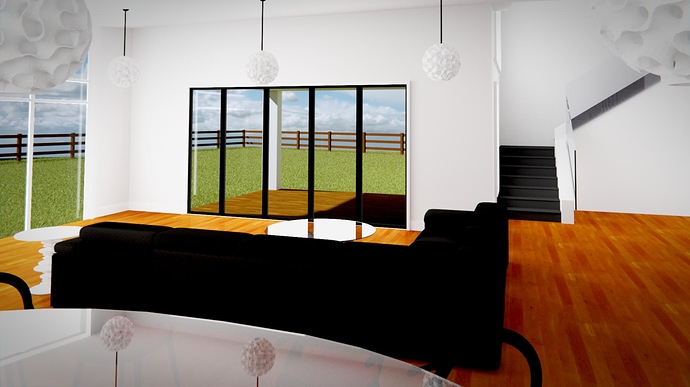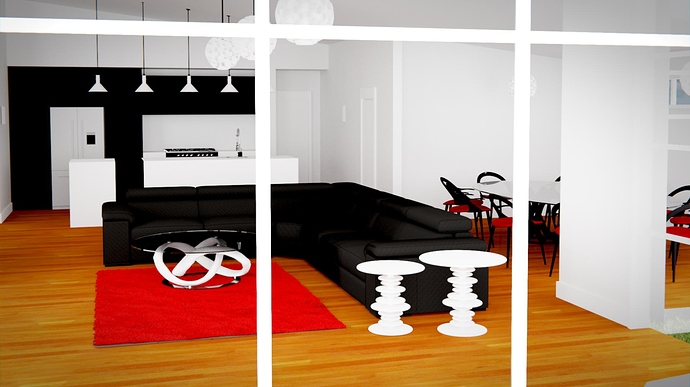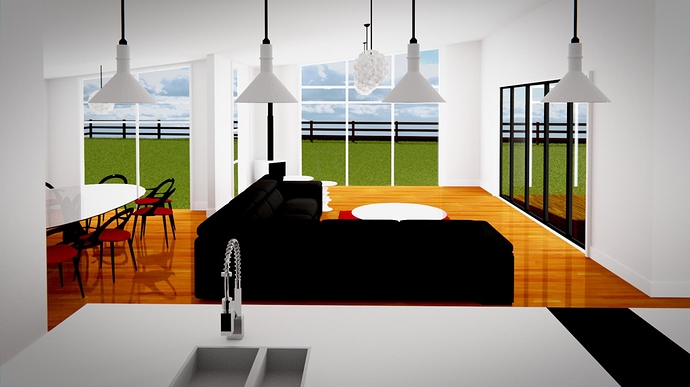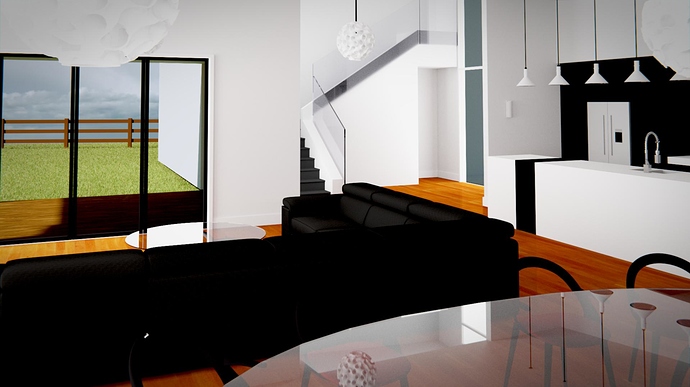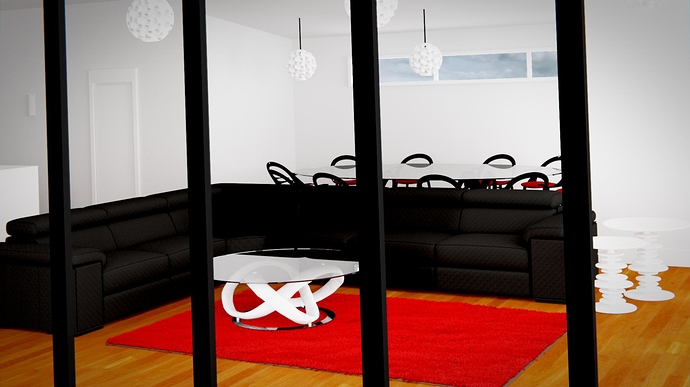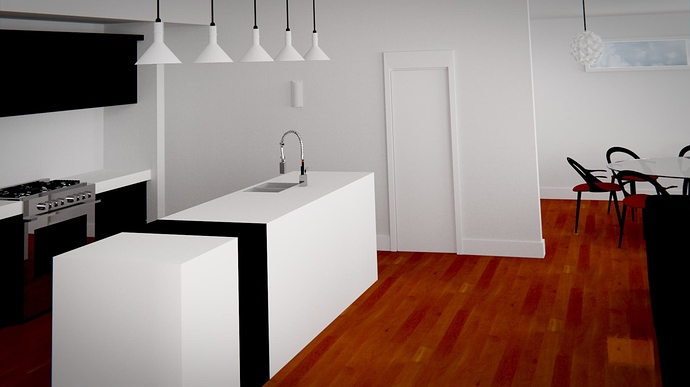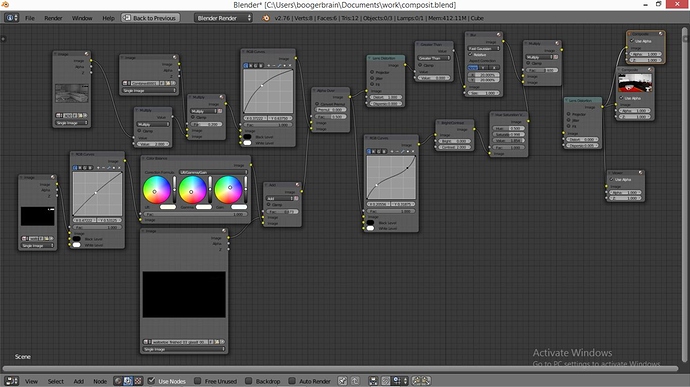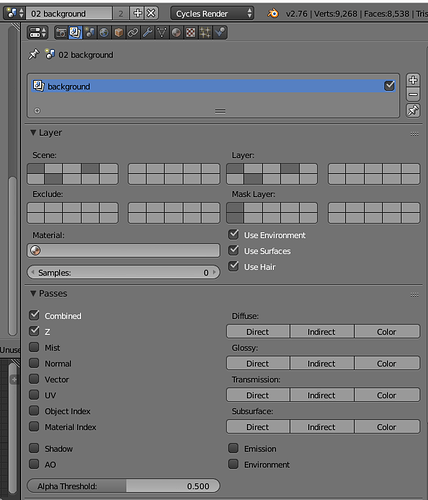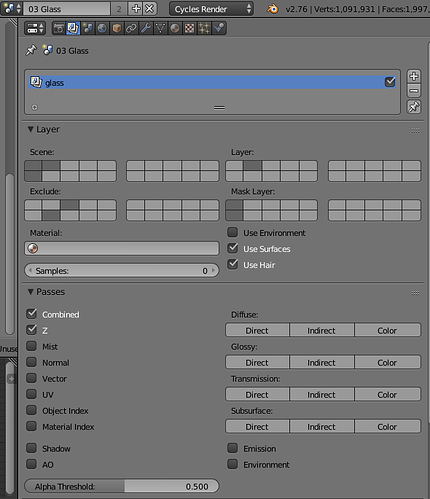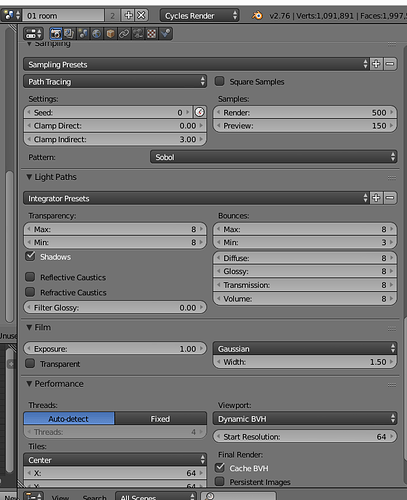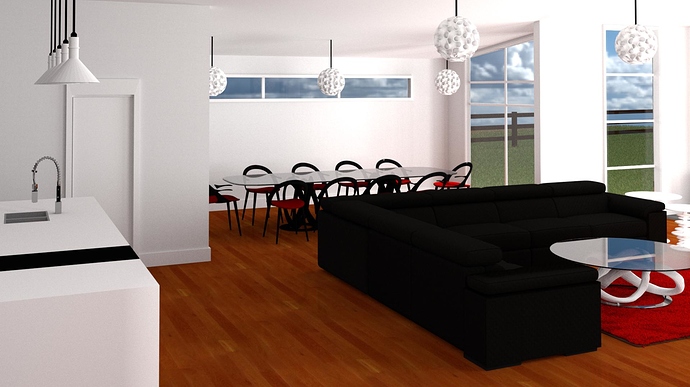Another issue might be with the layout of the scene: everything(!) is locked to a floor grid. I’ll bet that the sofa is precisely parallel to both walls, and that the furnishings are similarly “on a line.” Likewise, your camera positions often cause the lines of different things to precisely coincide. (For instance, notice how the sofa precisely lines up with the ascending staircase. And, P.S., in that same shot, notice how the deck outside the door appears to slope up towards the railings. Compare the interior floor-line to the outside floor-line.) When two lines line-up in this way, in a two-dimensional rendering the illusion of depth disappears. It’s kinda like a tree growing out of someone’s head.
My suggestion, then, is to rough-up the place a little bit. Make it look “lived-in,” or at least “livable.” Colors! Textures! Spot lights! Instead of a study in black-and-white, how about making (say …) the sofa slightly brown? A decorator might choose glasses or plates or some-such that are, say, “a bold splash of red, or blue, or yellow.” Anything to add visual interest.
And, a little “messy arrangement” of things so that it doesn’t look like the interior decorator placed things on the floor using a chalk-line and a measuring tape. A lot of the illusion of depth comes from slight variations in how things are positioned and how they are lit, and how the various lines within the scene don’t precisely match up to one another. Even a very slight rotation of various objects will add a great deal of interest.
Remember the CG lighting man’s favorite power-tool: the shadow-only spotlight. (Impossible to exist “in the real world,” but, happily, “this is not the real world!”) Use this to “cast shadows” without lightening the surface. You can even do this in a separate (Blender Internal …) render that contains (or, from which you are interested in …) “only the shadows, ma’am.” Then, with the compositor, use these shadows to darken selected areas of the scene, and/or to cast a slightly different (bluish?) hue into the shadows. Shadows are probably the most important factor in creating the illusion of depth, but they are expensive to calculate “correctly.” So, render shadelessly and inject shadows judiciously.
A standard tool that I’ve had since my photo days is “cropping boards,” made by slicing an ordinary picture-mat in half (diagonally) to make two L-shaped pieces. Within most shots (including yours) you will find a “tighter” shot … and a much better one … by cropping what is there. If you allow things “of equal visual interest” to be placed all over the frame, the viewer doesn’t know where their attention ought to be centered … doesn’t know what this picture is “about.” Don’t try to make the shot be “about” everything in the room at one time.
“Fly around” your scene in the workspace and/or in OpenGL Preview renders, looking for the most interesting places to put the camera, and watching carefully for “head trees.” Don’t shoot everything from the same distance, and don’t feel like you have to include everything in the shot. Also, don’t shoot everything with the same f-stop: vary “wide angle” vs. “telephoto” vs. “normal” shots. Let the cameraman sometimes stand on a ladder and sometimes crouch down. When shooting through a window, allow the window-frame to act as a framing device. A very, very slight z-rotation of the camera can add interest without making things look like they’re going to pour-out of the side of the frame.

